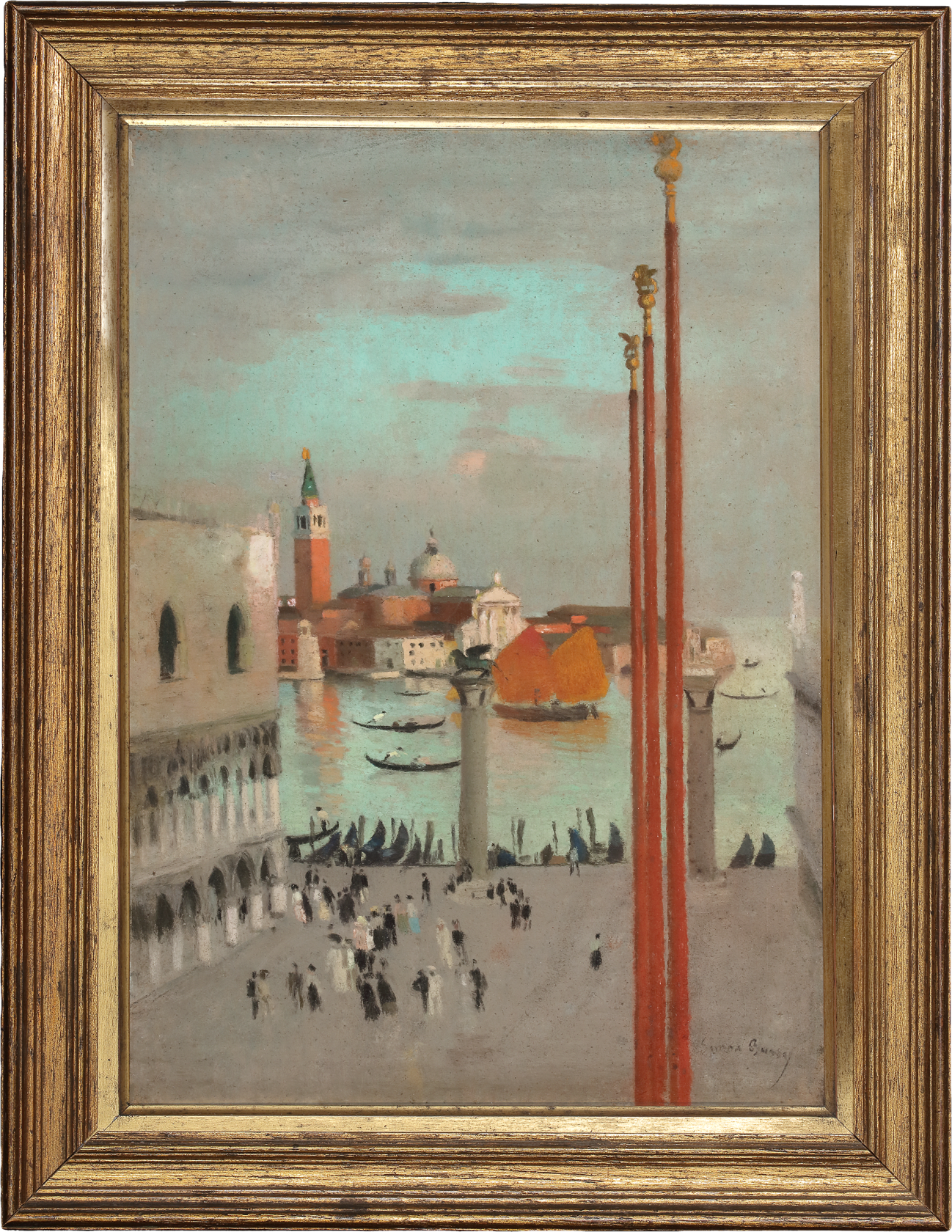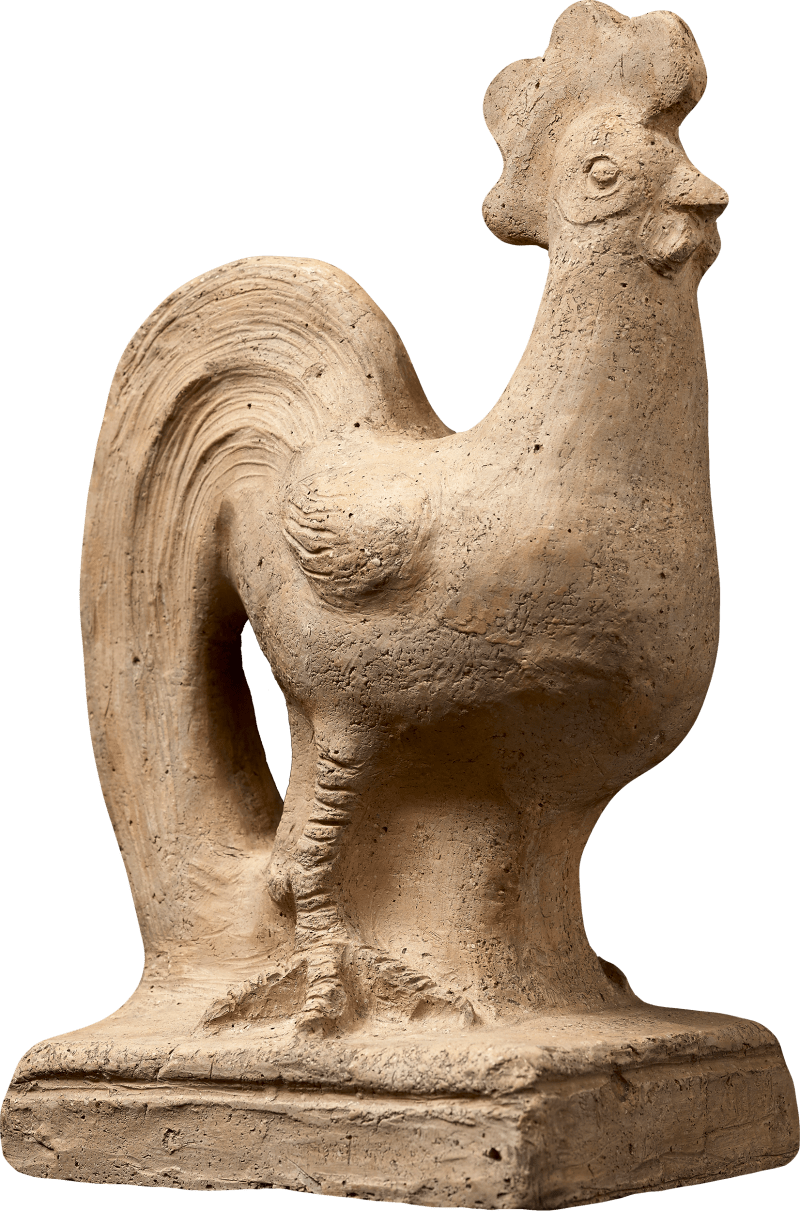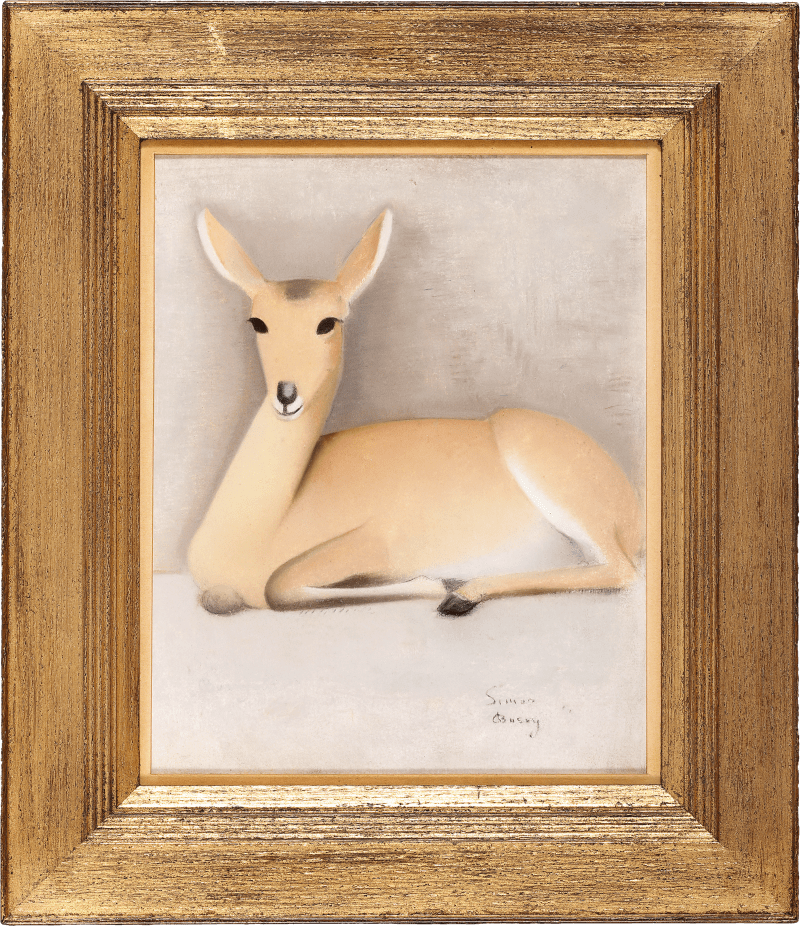Standing on an island of the same name, the San Giorgio Maggiore is one of the most beautiful Basilicas in Venice. Although small in scale, Bussy emphasises the magnitude and solidity of the renowned site through his assured application of pastel onto paper. Working closely among the Bloomsbury group, though not directly associated with them, Bussy’s exacting hand offers an alternative and detailed window from which to admire a past era.
Born to a family of shoemakers in Dole, France, Albert Simon Bussy attended the local drawing school. Bussy trained at the École des Beaux-Arts in Paris under the Symbolist painter Gustave Moreau (1826-1898). It was at the pioneering Galerie Durand-Ruel that Bussy had his first exhibition of works in pastel between 1897 and 1899. His colour palette was deeply influenced by his friend Henri Matisse, whom he studied with in Paris, however, it was his association with the Bloomsbury group of artists and writers that was to become an...
Standing on an island of the same name, the San Giorgio Maggiore is one of the most beautiful Basilicas in Venice. Although small in scale, Bussy emphasises the magnitude and solidity of the renowned site through his assured application of pastel onto paper. Working closely among the Bloomsbury group, though not directly associated with them, Bussy’s exacting hand offers an alternative and detailed window from which to admire a past era.
Born to a family of shoemakers in Dole, France, Albert Simon Bussy attended the local drawing school. Bussy trained at the École des Beaux-Arts in Paris under the Symbolist painter Gustave Moreau (1826-1898). It was at the pioneering Galerie Durand-Ruel that Bussy had his first exhibition of works in pastel between 1897 and 1899. His colour palette was deeply influenced by his friend Henri Matisse, whom he studied with in Paris, however, it was his association with the Bloomsbury group of artists and writers that was to become an enduring influence upon his oeuvre.
On his arrival in London in 1901, Busy was immediately introduced to the artistic and increasingly Bohemian circles that graced the doors of the London Art Club in Mayfair. Here he met the great English painter William Rothenstein (1872-1945) who greatly admired Bussy’s exhibition then on display at Leighton House.
In particular, it was Dorothy Strachey (1865-1960), novelist and translator, who made the biggest impression on Bussy. Strachey was a close friend of the Bloomsbury group and published her novel Olivia through the Hogarth Press with the help of Virginia Woolf, who founded the publishing house with her husband Leonard. Simon and Dorothy married two years after first meeting, in 1903. This connection firmly places Bussy and Strachey at the forefront of one of the most enriching and enduring cultural circles of the twentieth century.
Bussy and Strachey later set up a home at Le Souco, the house in Roquebrune near Monaco. Le Souco would soon become famous as an intellectual hub where the artistic and literary elite from both sides of the channel were to convene and exchange their ideas. Lytton Strachey, Duncan Grant (whom later referred to Bussy as his Master), Roger Fry, Vanessa Bell and Virginia Woolf all came to stay at Le Souco for long periods of time. Its place within the history of Bloomsbury is as significant, if not as famous, as 46 Gordon Square, London, the home that Vanessa Bell established with her siblings Virginia, Adrian and Thoby in 1904.
[1] L. Gowing quoted in M. A. Caws, Bloomsbury and France. Oxford: Oxford University Press, 2000.













